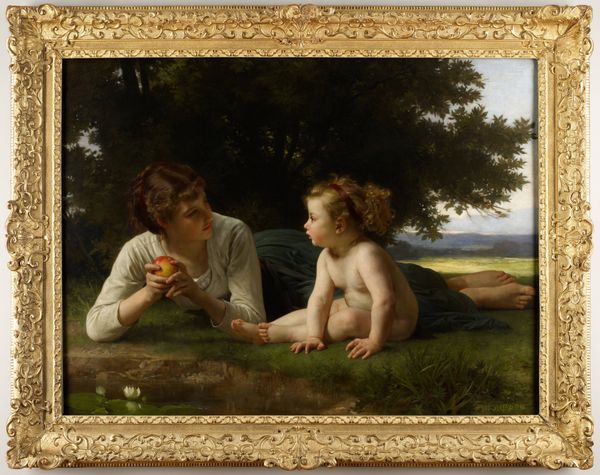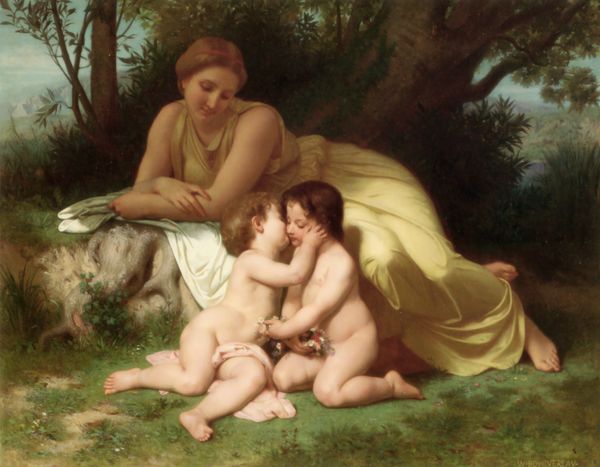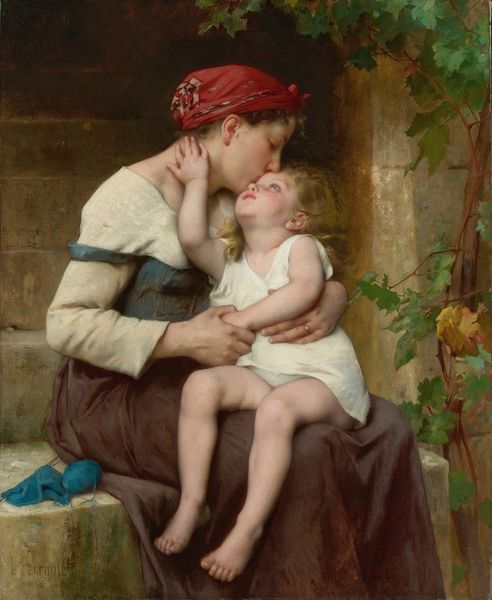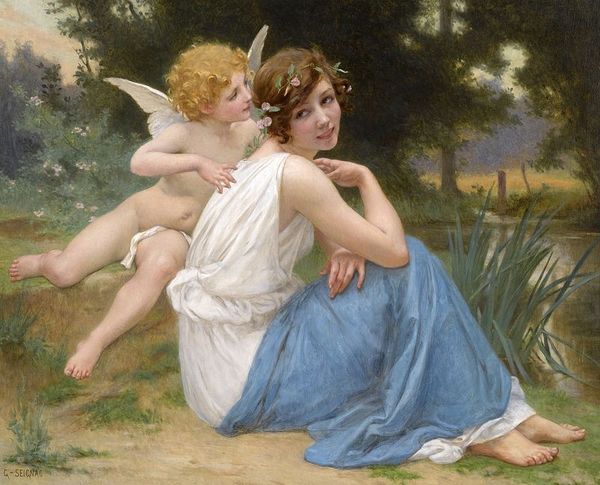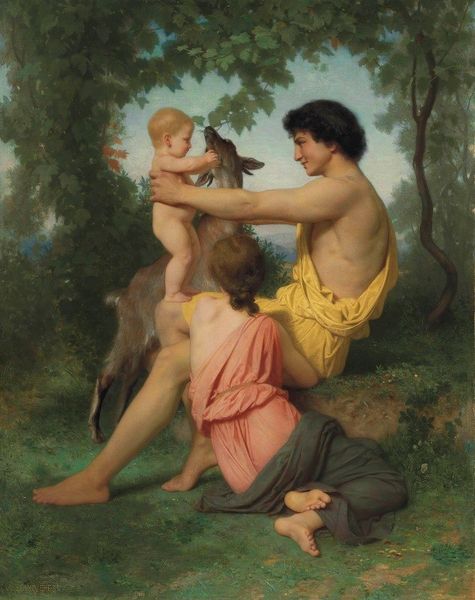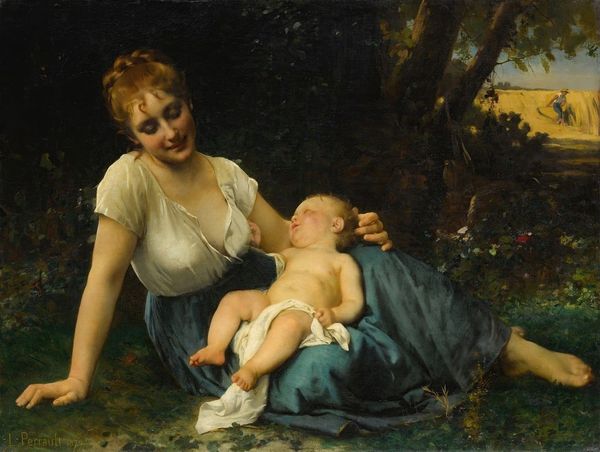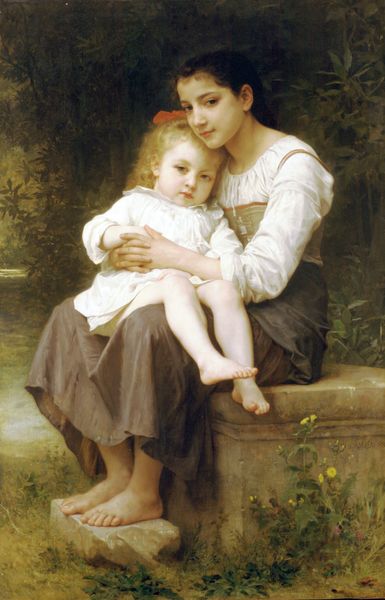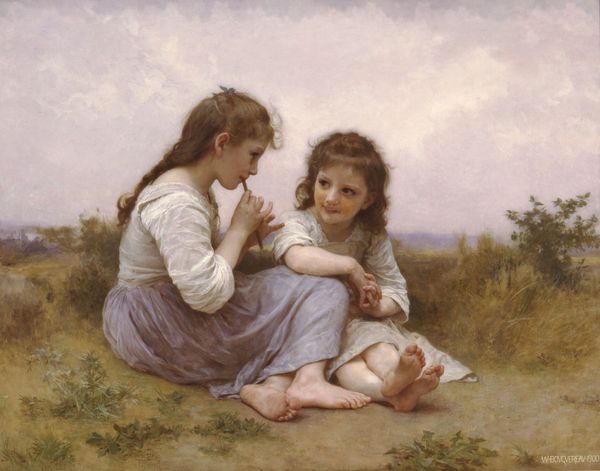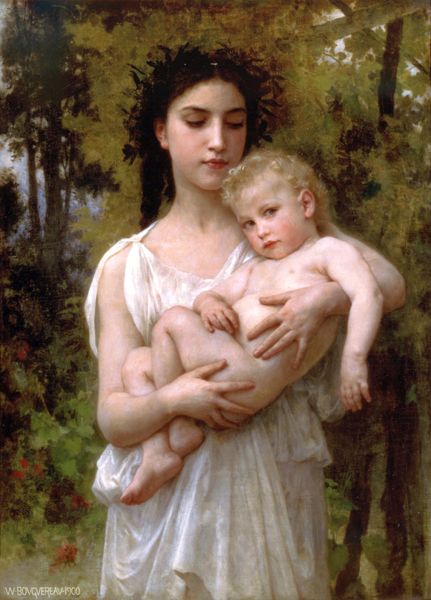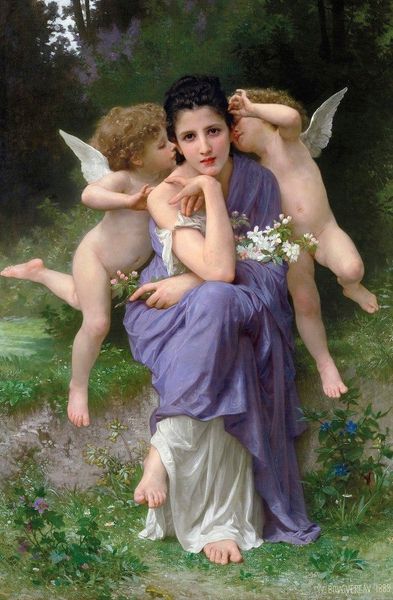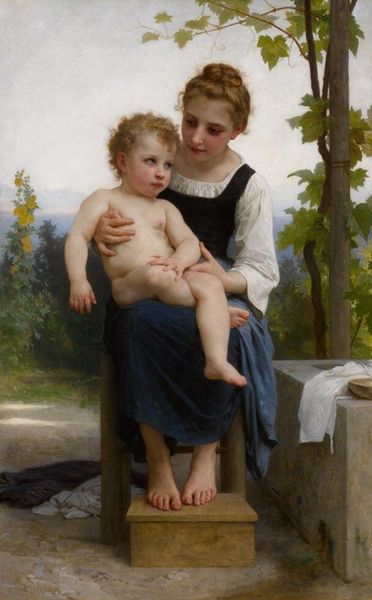
Copyright: Public Domain: Artvee
Editor: Here we have William Bouguereau’s "Temptation," painted in 1880, rendered in oil on canvas. I am struck by how staged and idyllic the whole scene feels. What can we really read into the cultural context behind this artwork? Curator: Think about the apple first. What does that represent in the broader social context, especially for a 19th-century viewer steeped in religious iconography? It's a charged object, right? Representing knowledge, sin, choice. The mode of production for paintings like this, commissioned primarily by wealthy patrons, shaped its content. These paintings are a commodity as well as a composition. Editor: That's true. The "temptation" could extend to the viewers themselves, desiring ownership. But the execution is so polished; does that contribute to its meaning? Curator: Absolutely. Consider the labor involved: the academic training, the studio assistants, the layers of glazes to achieve that flawless finish. All this contributes to the perception of value and, ultimately, to the painting's desirability as a status symbol for the rising bourgeoisie. Look closer: Bouguereau minimizes the brushstrokes. Do you think that's meant to emphasize skill or obscure labor? Editor: It feels like it obscures the labor, contributing to a sense of timeless beauty, almost distancing it from any process of creation. What implications do you think the painting holds based on the status it portrays of women during the time period? Curator: Certainly the woman holding the apple, presenting the object, is active while the infant looks onward almost as if receiving this forbidden fruit; their class, their leisure, even the *choice* they have over indulging are only available to a privileged few. I notice they have very pale skin indicating no outside laborious tasks. The painting presents a myth of carefree existence made possible by the exploitation of others. What's been obscured is that for most other mothers, leisure time was unavailable to them. Editor: So much more than just an innocent scene; there are definite ties between art production and societal class. Thanks for your insight. Curator: Indeed. The materiality of art, its making, and its consumption are deeply entwined. Examining that entanglement allows us to see beyond the surface of idyllic beauty.
Comments
No comments
Be the first to comment and join the conversation on the ultimate creative platform.
